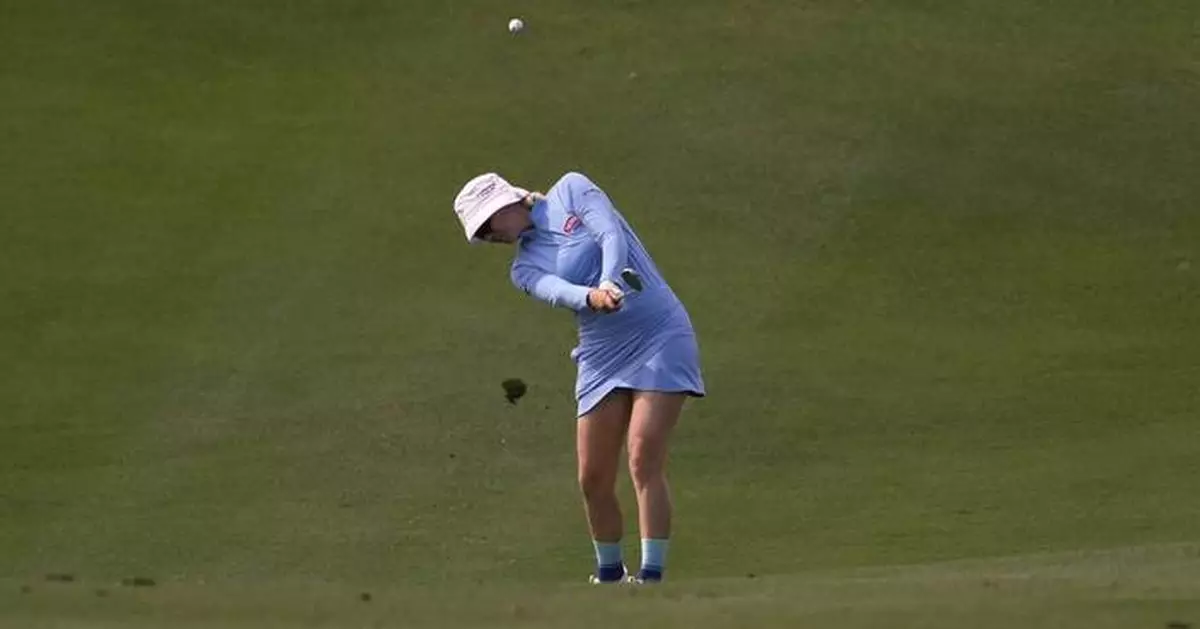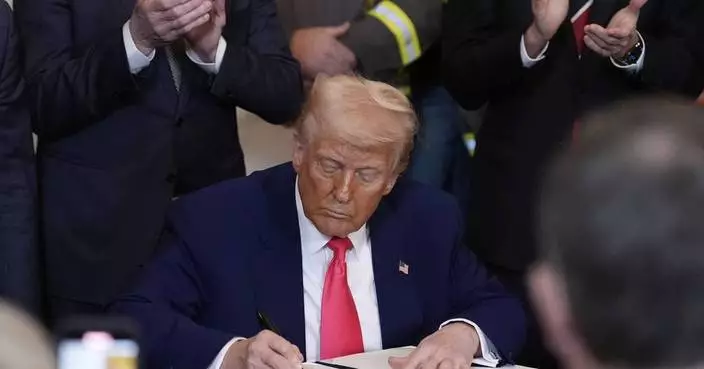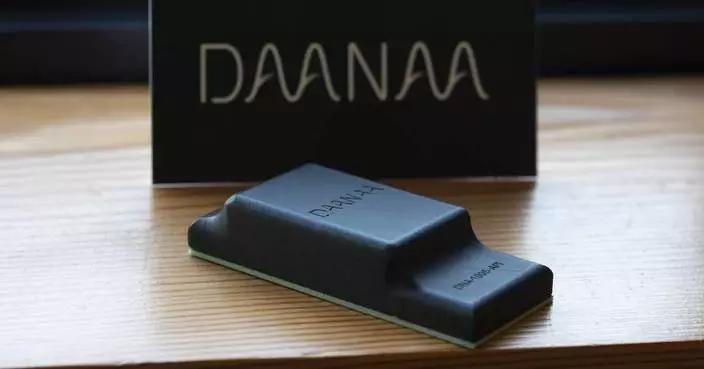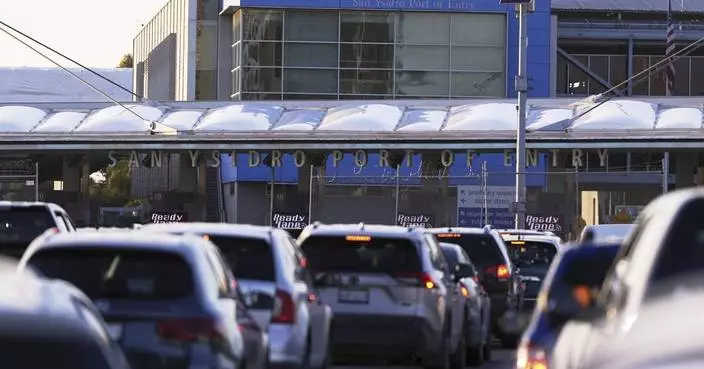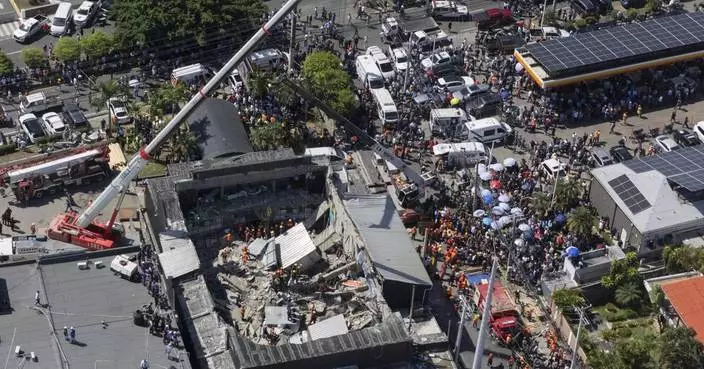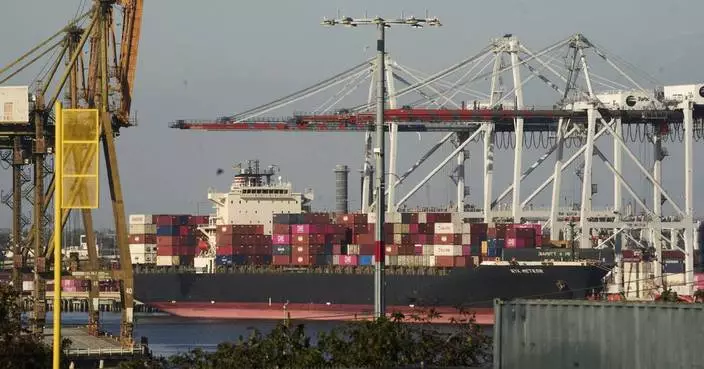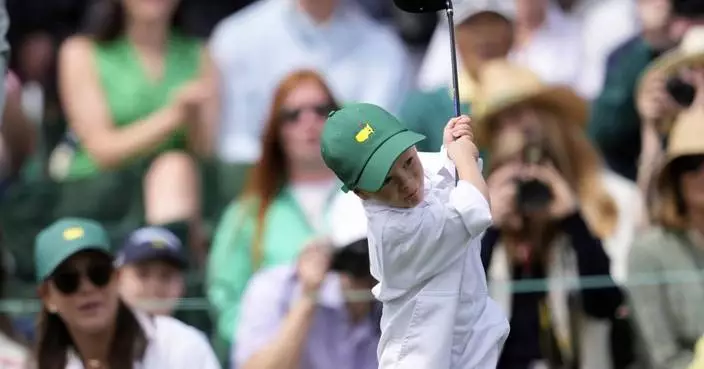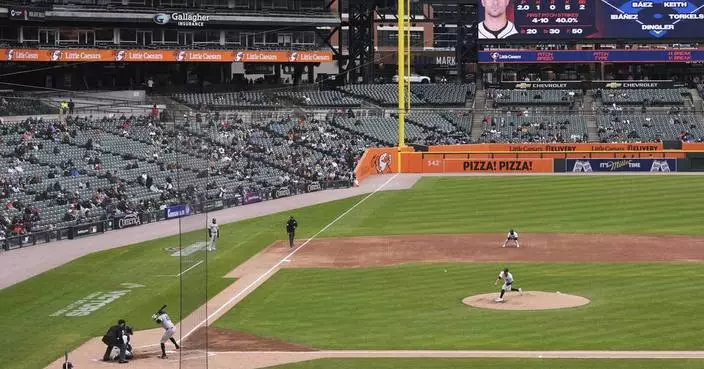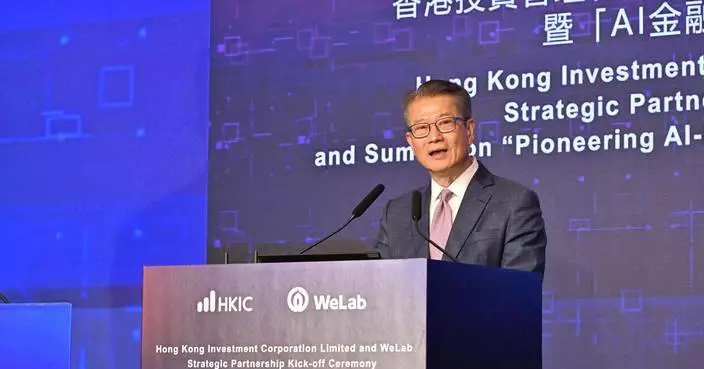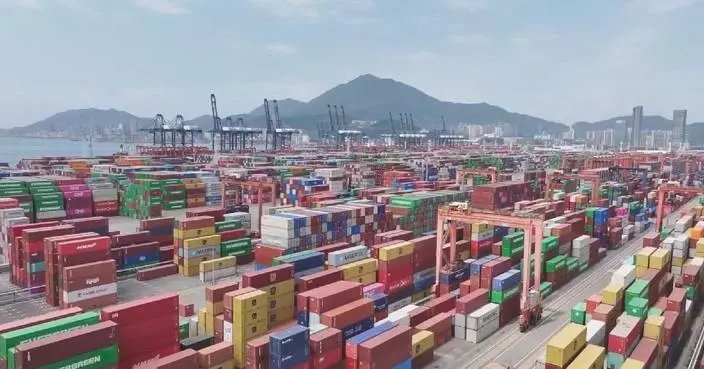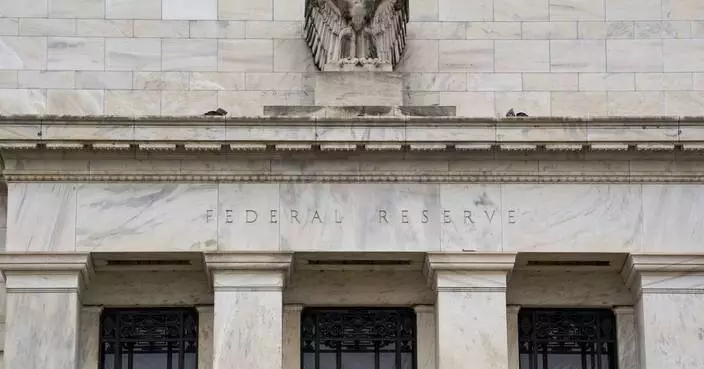NORTH LAS VEGAS, Nev. (AP) — The five-year wait to end her LPGA Tour victory drought appeared to be a matter of time when Madelene Sagstrom went 4-up just six holes into the final of the T-Mobile Match Play.
Then it nearly got away from her, and Sagstrom even briefly fell behind at one point.
Click to Gallery
Lauren Coughlin chips onto the 16th green during the final round of the LPGA T-Mobile Match Play golf tournament Sunday, April 6, 2025, in North Las Vegas, Nev. (AP Photo/John Locher)
Madelene Sagstrom putts on the 13th green during the final round of the LPGA T-Mobile Match Play golf tournament Sunday, April 6, 2025, in North Las Vegas, Nev. (AP Photo/John Locher)
Madelene Sagstrom reacts after chipping onto the 15th green during the final round of the LPGA T-Mobile Match Play golf tournament Sunday, April 6, 2025, in North Las Vegas, Nev. (AP Photo/John Locher)
Madelene Sagstrom putts on the first green during the final round of the LPGA T-Mobile Match Play golf tournament Sunday, April 6, 2025, in North Las Vegas, Nev. (AP Photo/John Locher)
Madelene Sagstrom hits off the fourth tee during the final round of the LPGA T-Mobile Match Play golf tournament Sunday, April 6, 2025, in North Las Vegas, Nev. (AP Photo/John Locher)
Madelene Sagstrom chips onto the third green during the final round of the LPGA T-Mobile Match Play golf tournament Sunday, April 6, 2025, in North Las Vegas, Nev. (AP Photo/John Locher)
Madelene Sagstrom hits out of a bunker on the fourth houle during the final round of the LPGA T-Mobile Match Play golf tournament Sunday, April 6, 2025, in North Las Vegas, Nev. (AP Photo/John Locher)
Madelene Sagstrom hits off the third tee during the final round of the LPGA T-Mobile Match Play golf tournament Sunday, April 6, 2025, in North Las Vegas, Nev. (AP Photo/John Locher)
Madelene Sagstrom kisses the trophy after winning the LPGA T-Mobile Match Play golf tournament Sunday, April 6, 2025, in North Las Vegas, Nev. (AP Photo/John Locher)
Madelene Sagstrom reacts after winning the LPGA T-Mobile Match Play golf tournament Sunday, April 6, 2025, in North Las Vegas, Nev. (AP Photo/John Locher)
Madelene Sagstrom, right, celebrates after winning the LPGA T-Mobile Match Play golf tournament Sunday, April 6, 2025, in North Las Vegas, Nev. (AP Photo/John Locher)
Madelene Sagstrom reacts after winning the LPGA T-Mobile Match Play golf tournament Sunday, April 6, 2025, in North Las Vegas, Nev. (AP Photo/John Locher)
Madelene Sagstrom poses with the trophy after winning the LPGA T-Mobile Match Play golf tournament Sunday, April 6, 2025, in North Las Vegas, Nev. (AP Photo/John Locher)
Lauren Coughlin chips onto the fourth green during the first round of the LPGA T-Mobile Match Play golf tournament Wednesday, April 2, 2025, in North Las Vegas, Nev. (AP Photo/John Locher)
Madelene Sagstrom, of Sweden, hits from the 18th fairway during the first round of the Ford Championship LPGA golf event, Thursday, March 27, 2025, in Phoenix. (AP Photo/Matt York)
She righted herself, however, as Lauren Coughlin struggled down the stretch, for a 1-up victory Sunday at a Shadow Creek course that proved a difficult challenge for both players.
Sagstrom took the lead for good with a par at the par-5 16th hole. Coughlin made a double bogey on the hole.
Perhaps it was a fitting when the world's top-ranked players fell one after another at the picturesque but demanding course that someone ranked 67th claimed the $300,000 winner's share. The Swede's other win came in 2020 at the Gainbridge LPGA at Boca Rio.
“I thought last week, ‘Am I ever going to play good golf again?’” Sagstrom said. “As professional golfers, it’s (a) very rewarding job when it goes well, but extremely difficult when it’s tough and I’ve questioned myself a lot in my career. Am I good enough to play against these girls? Am I going to be one of the best players in the world? I’ve always had the ambition to be, but then I never know really.”
The final match reached the 18th green for the first time the 5-year-old event.
In a battle of 32-year-olds, Sagstrom had a four-hole lead after just six holes when Coughlin bogeyed No. 2 and she rolled off three consecutive birdies beginning at No. 4. But then the match changed, with a suddenly shaky Sagstrom missing off the tee and failing to navigate the lightning-quick greens that took even well-struck approach shots into the rough.
“It’s a wonderful golf course, but it will test your whole game,” Sagstrom said. “Unless we play match play here, I can see this being a U.S. Open course. It’s such a good golf course that challenges you from putting, strategy, from everything. What surprises me the most is this oasis of a golf course that just sits here. It’s like you come in here and you’re in a little different world.”
Couglin claimed five of the next six holes to take the lead. Though she did her part with a pair of birdies, Coughlin also didn't have to do anything spectacular as Sagstrom carded three bogeys and two doubles over that stretch.
Then Coughlin bogeyed the par-3 13th, and Sagstrom made par to pull back even, which is where the match stood until the 16th.
Both players failed to stay out of the rough, with Coughlin even twice chipping from about the same spot after the ball rolled back on her. Coughlin finally conceded the hole after her 30-foot putt went well past and the double bogey put Sagstrom back in the lead.
“That’s the challenge of this golf course and why it’s both fun and extremely difficult at the same time,” Coughlin said. “You can hit some really cool shots off some banks and stuff, but also if you get on the wrong side of those, it’s really, really tough. It’s hard to judge, like when is the ball starting to go far? And then when is it not going far anymore?”
Coughlin, ranked 17th, has been a tough out all tournament. She played in at least 18 holes in every match, a total of 127 compared to 72 for a traditional stroke-play tournament. Coughlin was 3-down in her previous two matches before rallying to win, including a 1-up victory over Ariya Jutanugarn in the semifinals Sunday morning.
“I don’t think I ran out of gas at all,” Coughlin said. “I feel like the adrenaline kept me through all day, all day yesterday. Felt worse yesterday afternoon than I did today, actually. I just kind of lost it there a little bit at the end. Just didn’t get any putts to go. Other than that, I feel like I played really, really good golf today.”
Sagstrom has been pushed to the limits as well.
She survived a 19-hole round-of-16 match against Carlota Ciganda on Saturday and then had to wait more than two hours as Celine Boutier and Ashleigh Buhai went at it over 28 holes. Then it became another marathon of a match as Sagstrom and Boutier were tied through 17 as darkness set in. The match was suspended, and Sagstrom finished up early Sunday morning with a 19th-hole quarterfinals victory.
Sagstrom then took out 12th-ranked Angel Yin 4 and 2 in the semifinals.
Coughlin was seeking her first victory since the Scottish Open in August. The Charlottesville, Virginia, resident has two career victories, both last year.
AP golf: https://apnews.com/hub/golf
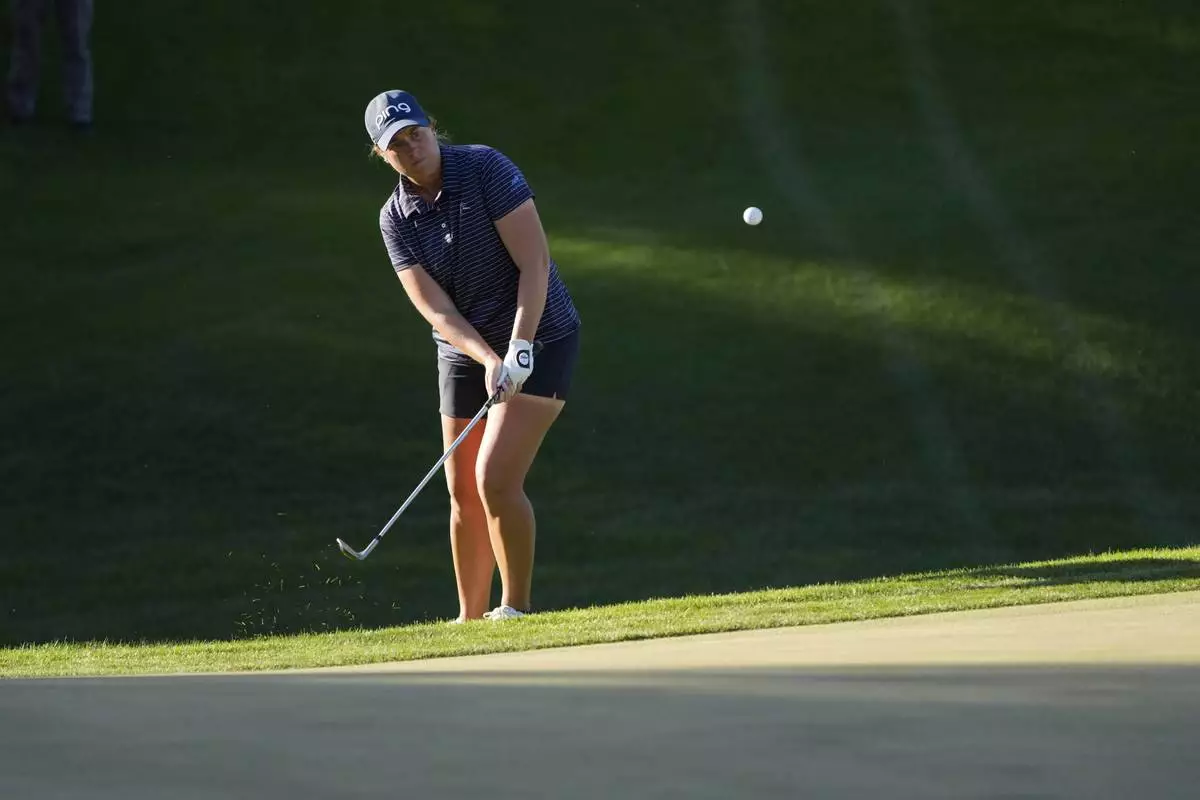
Lauren Coughlin chips onto the 16th green during the final round of the LPGA T-Mobile Match Play golf tournament Sunday, April 6, 2025, in North Las Vegas, Nev. (AP Photo/John Locher)

Madelene Sagstrom putts on the 13th green during the final round of the LPGA T-Mobile Match Play golf tournament Sunday, April 6, 2025, in North Las Vegas, Nev. (AP Photo/John Locher)
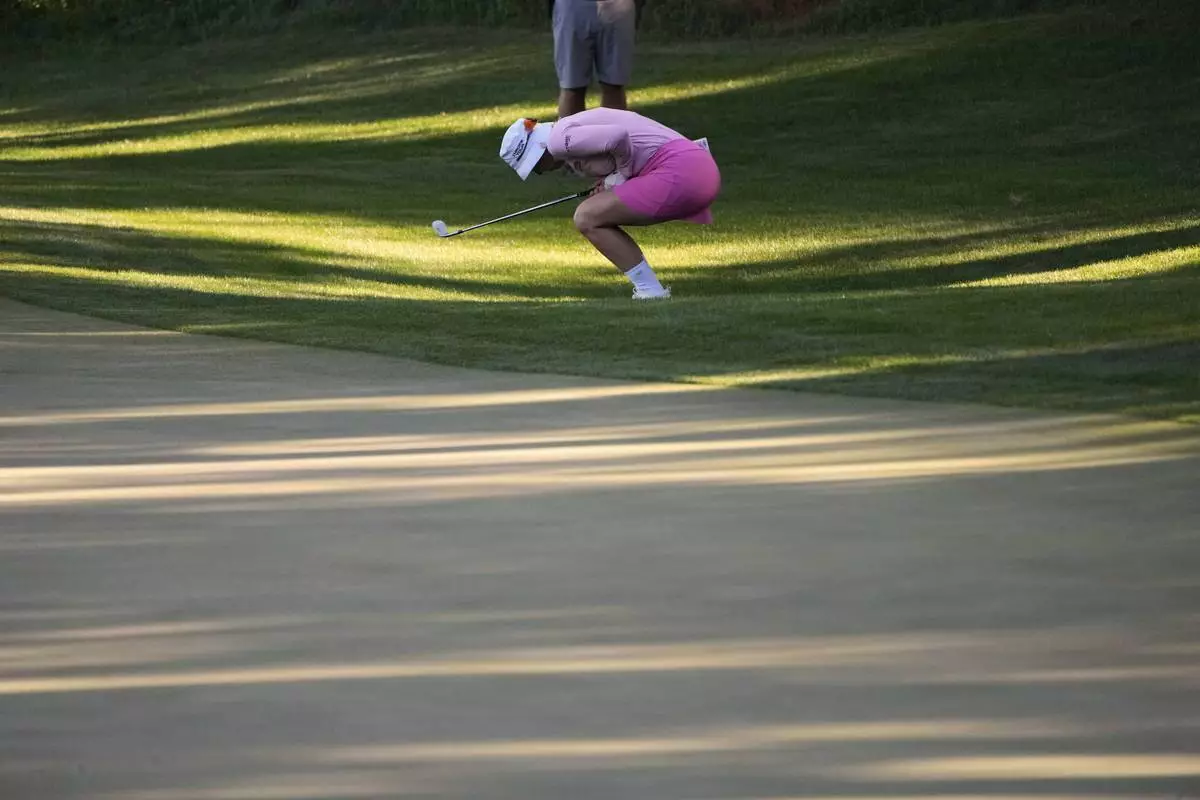
Madelene Sagstrom reacts after chipping onto the 15th green during the final round of the LPGA T-Mobile Match Play golf tournament Sunday, April 6, 2025, in North Las Vegas, Nev. (AP Photo/John Locher)
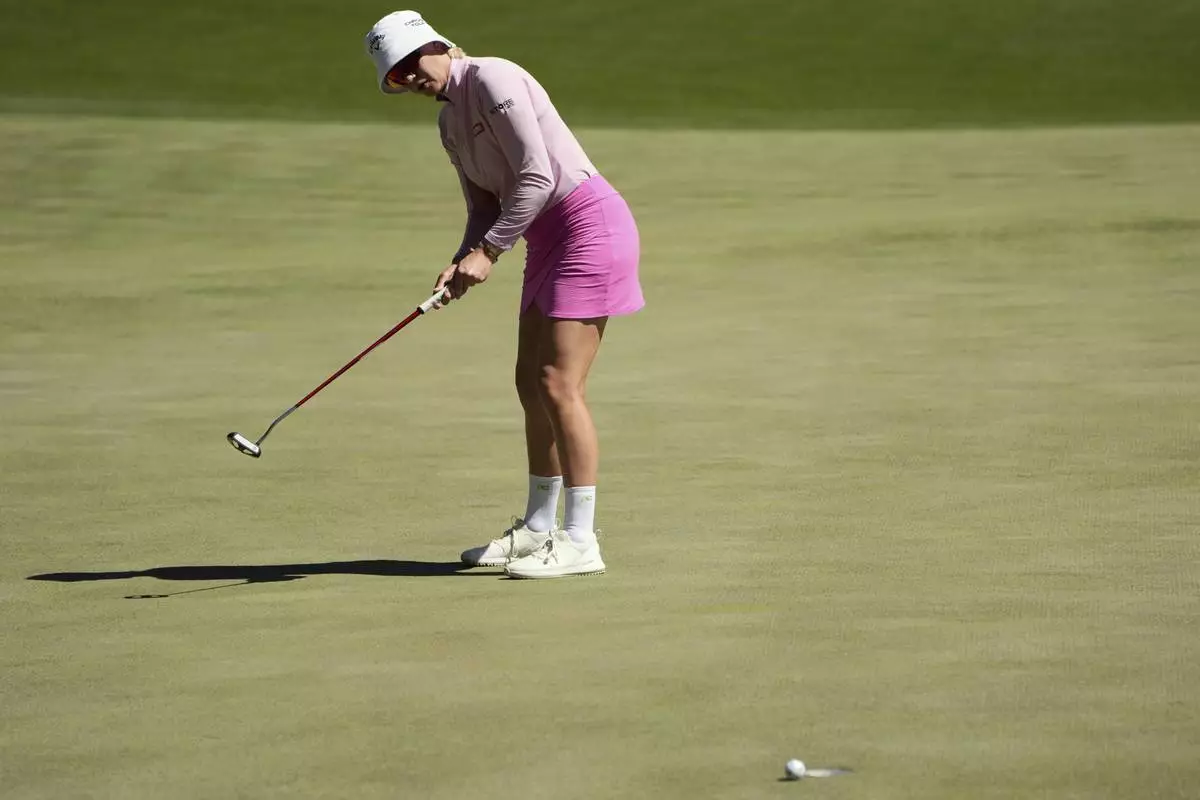
Madelene Sagstrom putts on the first green during the final round of the LPGA T-Mobile Match Play golf tournament Sunday, April 6, 2025, in North Las Vegas, Nev. (AP Photo/John Locher)

Madelene Sagstrom hits off the fourth tee during the final round of the LPGA T-Mobile Match Play golf tournament Sunday, April 6, 2025, in North Las Vegas, Nev. (AP Photo/John Locher)
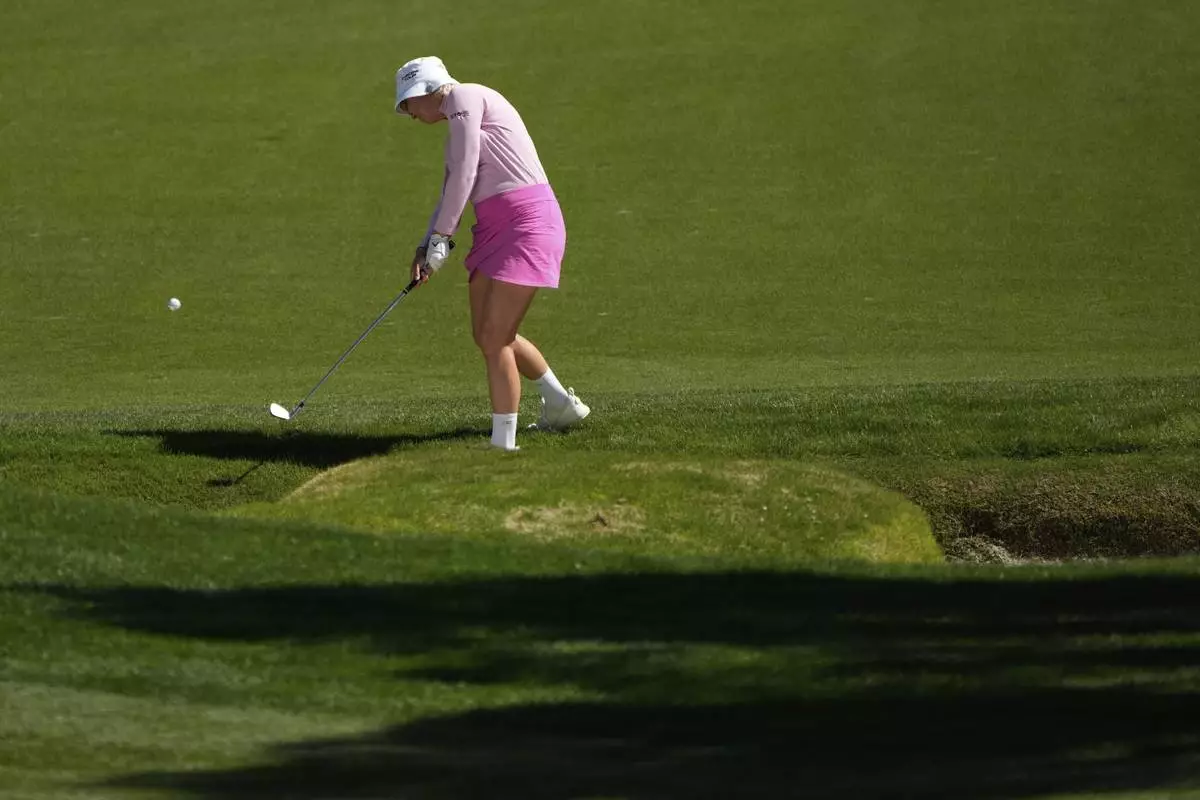
Madelene Sagstrom chips onto the third green during the final round of the LPGA T-Mobile Match Play golf tournament Sunday, April 6, 2025, in North Las Vegas, Nev. (AP Photo/John Locher)

Madelene Sagstrom hits out of a bunker on the fourth houle during the final round of the LPGA T-Mobile Match Play golf tournament Sunday, April 6, 2025, in North Las Vegas, Nev. (AP Photo/John Locher)

Madelene Sagstrom hits off the third tee during the final round of the LPGA T-Mobile Match Play golf tournament Sunday, April 6, 2025, in North Las Vegas, Nev. (AP Photo/John Locher)

Madelene Sagstrom kisses the trophy after winning the LPGA T-Mobile Match Play golf tournament Sunday, April 6, 2025, in North Las Vegas, Nev. (AP Photo/John Locher)

Madelene Sagstrom reacts after winning the LPGA T-Mobile Match Play golf tournament Sunday, April 6, 2025, in North Las Vegas, Nev. (AP Photo/John Locher)

Madelene Sagstrom, right, celebrates after winning the LPGA T-Mobile Match Play golf tournament Sunday, April 6, 2025, in North Las Vegas, Nev. (AP Photo/John Locher)
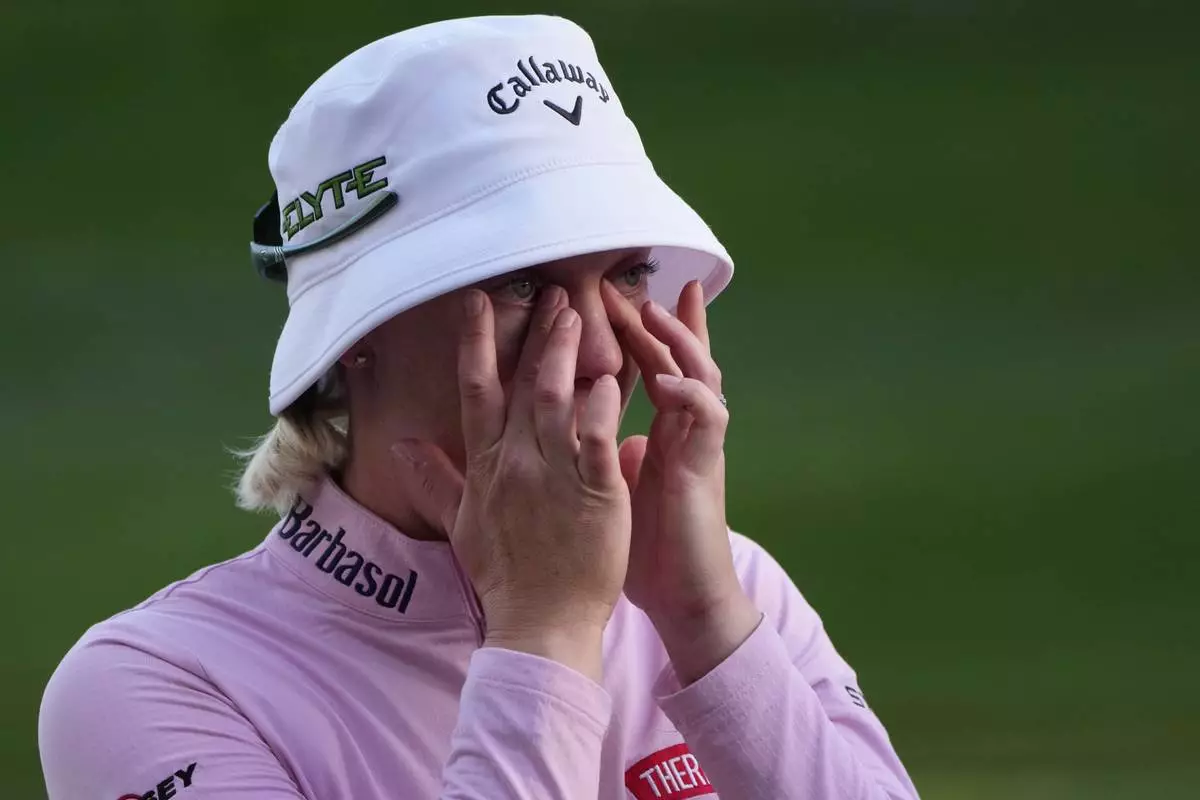
Madelene Sagstrom reacts after winning the LPGA T-Mobile Match Play golf tournament Sunday, April 6, 2025, in North Las Vegas, Nev. (AP Photo/John Locher)

Madelene Sagstrom poses with the trophy after winning the LPGA T-Mobile Match Play golf tournament Sunday, April 6, 2025, in North Las Vegas, Nev. (AP Photo/John Locher)

Lauren Coughlin chips onto the fourth green during the first round of the LPGA T-Mobile Match Play golf tournament Wednesday, April 2, 2025, in North Las Vegas, Nev. (AP Photo/John Locher)

Madelene Sagstrom, of Sweden, hits from the 18th fairway during the first round of the Ford Championship LPGA golf event, Thursday, March 27, 2025, in Phoenix. (AP Photo/Matt York)
WASHINGTON (AP) — The stock market was soaring and the sun was shining when President Donald Trump stepped out of the Oval Office on Wednesday afternoon. Less than two hours earlier, he had retreated from his plans to increase tariffs on many U.S. trading partners, and investors were rejoicing after bracing for a global economic meltdown.
“You’ve got the markets seeing your brilliance,” Sen. John Barrasso, a Republican from Wyoming, told the president.
Trump agreed. “Nobody’s ever heard of it,” he declared.
It was a typical bit of hyperbole that, in this case, was true. Even by the standards of Trump’s second term, the saga that had played out over the past week left the world struggling to catch its breath.
The Republican president, of his own doing, had single-handedly pushed the global economy to the brink of chaos with new tariffs. The stock market cratered, businesses tore up their plans and foreign leaders prepared for a future without the world's richest nation at the center of international trade.
And then Trump backed down. Seven days after announcing what would have amounted to America’s largest tax hike since World War II in an elaborate Rose Garden ceremony, he rolled back most of the tariffs in a surprise post on his social media website.
"I think the word would be flexible," he said later despite days of insisting that he wouldn't bend. “You have to be flexible.”
It was unclear what the president had accomplished, beyond the satisfaction of, in his words, having other countries “kissing my ass” to try to talk him out of the tariffs. No new trade deals have been reached, although administration officials said negotiations are underway.
However, real damage has been done. The back-and-forth over tariffs shook confidence in U.S. leadership, exposed fractures within Trump’s team and rattled companies that rely on global sources for products and international customers for sales. Americans who use the stock market to save for retirement and college suffered days of angst.
The turmoil isn’t over yet, either. Trump's 10% blanket tariffs initially imposed on Saturday are now applied to dozens of nations. He also jacked up tariffs to 125% on imports from China, leaving the world bracing for a showdown between the first and second largest economies. There are 25% tariffs on Canada and Mexico, America’s largest trading partners, as well as 25% taxes on imported autos, steel and aluminum.
Other tariffs — including 24% on Japan, 25% on South Korea, 20% on the European Union — are on hold for 90 days to allow for trade talks.
“This just accentuates the policy uncertainty and sense of unreliability Trump is creating,’’ said William Reinsch, a former U.S. trade official now at the Center for Strategic and International Studies. While Reinsch said it’s good news that Trump didn’t move forward with some of his highest tariffs, “how does anybody know that he won’t change his mind on Friday or next week?”
U.S. flags were draped along the White House colonnade for a red-white-and-blue backdrop when Trump announced his tariffs on Wednesday, April 2.
“My fellow Americans, this is Liberation Day,” he said. The president held up a poster listing the tariffs that he would slap on each country — 32% for Thailand, 49% for Cambodia, 26% for India, and on and on. People around the world squinted to decipher the numbers that would reset critical economic relationships.
Trump has been fixated on international trade for decades, long before entering politics. His central concern is trade deficits, meaning the U.S. imports more than it exports.
But the focus puzzles mainstream economists, who don’t view the situation with the same level of alarm. It’s no surprise, they said, that a rich nation like the U.S. would buy more than it sells, and they’re generally skeptical that tariffs alone would eliminate trade deficits.
However, Trump declared that it was a “national emergency” that would allow him to push tariffs without congressional approval. His tariffs were not based on the import taxes charged by other countries but by the size of each trade deficit, a calculation that instantly discredited the policy with many economists and investors. Also baffling were the tariffs placed on Heard and McDonald Islands, which are mainly populated by penguins.
The day after the announcement, Trump jetted to Florida for the weekend.
“The markets are going to boom, the stock is going to boom, the country is going to boom,” he promised while leaving the White House, the whirring rotors of Marine One sometimes overpowering his voice. “And the rest of the world wants to see if there is any way they can make a deal.”
But the market was crashing, posting its biggest single-day loss since the outbreak of the coronavirus pandemic five years earlier. And it didn't get any better as Trump attended a Saudi-funded tournament at his Miami golf course and participated in a candle-lit dinner for an allied political organization.
On the flight back to Washington on Sunday evening, Trump told reporters that he won a club championship.
“It’s good to win," he said. "You heard I won, right?”
But around the country and the world, the fallout was spreading.
Fulcrum Coffee Roasters in Seattle braced for rising costs for beans from Southeast Asia and espresso machines from Italy. Stellantis, the automaker behind brands like Jeep and Ram, announced it would pause production at plants in Mexico and Canada, leading to temporary layoffs at other facilities in Indiana and Michigan, a reminder of how interconnected vehicle supply chains have become.
The Dutch division of Tata Steel said it would cut 1,600 employees, about a fifth of its workforce. Ireland Prime Minister Michael Martin said “there is no way to sugar coat” the situation as business with the U.S. started tapering off. Sri Lanka worried that its economic recovery would be derailed as its clothing industry faced new tariffs from its most important export market.
The markets were still in a panic on Monday when an unverified report circulated that the president was considering a 90-day pause on the tariffs. Stocks briefly soared before investors realized the information was wrong.
“We’re not looking at that,” Trump said as hopes for the rumored reprieve vanished.
By Tuesday, with fears of a recession growing, Trump’s closest advisers began publicly sparring with one another. Billionaire entrepreneur Elon Musk, who leads the administration’s efforts to trim the size of government, openly questioned the wisdom of the tariffs, which would raise costs for his electric automaker Tesla. White House trade adviser Peter Navarro insisted that Musk “doesn’t understand” the situation. Musk fired back that Navarro was “truly a moron” and “dumber than a sack of bricks.”
Republican lawmakers returning to the Capitol for the workweek were peppered with questions about the tariffs and what they would do in response. Some began voicing support for legislation meant to rein in a president’s tariff powers, before the White House struck back forcefully with a veto threat.
Sen. Ron Johnson of Wisconsin was asked on Tuesday if he understood Trump’s strategy, and responded by asking “does anybody?” Some of his state’s premier companies like Kohl’s expected higher costs, while its dairy farms expected to struggle to sell milk and cheese. Harley-Davidson was a target of planned reciprocal tariffs by the European Union.
Sen. Thom Tillis of North Carolina was even more blunt that day during a hearing with Trump’s top trade representative, Jamieson Greer. If the tariff plans don’t work, he said, “I’m just trying to figure out whose throat I need to choke.” His state’s farmers, who raise hogs and grow tobacco among other products, feared getting caught in the crossfire of a trade war, while local manufacturers and tech companies could face higher prices on what they export to foreign consumers.
Treasury Secretary Scott Bessent, a former hedge fund manager with intimate knowledge of the financial sector, held a round of meetings on Capitol Hill, including a lunch with Sen. John Kennedy, a Republican from Louisiana.
Kennedy had grown concerned about the tariffs, and he said they “talked very frankly.” He was part of a group of senators who sat down for an interview with Sean Hannity on Tuesday night in hopes of swaying Trump’s mind through one of his favorite Fox News hosts.
Trump had been brushing off concerns about the tariffs and the market collapse by saying “sometimes you have to take medicine to fix something.”
Kennedy wasn't convinced, even if he shared the president's concerns about unfair trade practices.
“We don’t know if the medicine will be worse than the disease,” he said.
The tariffs on allies like Japan, South Korea and the European Union took effect at 12:01 a.m. on Wednesday, and there were no signs that Trump would back down when the sun came up in Washington.
“BE COOL! Everything is going to work out well,” he posted on Truth Social.
Trump also wrote: “THIS IS A GREAT TIME TO BUY!!!” — advice that turned out to be fortuitous. The president later said he'd been talking with his aides that morning about pausing the tariffs, an announcement that would send the stock market soaring.
Greer was back on Capitol Hill for another hearing when Trump made his announcement.
Rep. Steven Horsford, a Nevada Democrat, asked if Trump's trade representative knew that the tariffs he had just spent at least two hours defending had been paused.
“I understand the decision was made a few minutes ago,” Greer said.
Horsford erupted, saying “this is amateur hour, and it needs to stop.”
At the White House, press secretary Karoline Leavitt scolded reporters for not understanding the president's plans.
“Many of you in the media clearly missed The Art of the Deal,” she said, referencing Trump’s book from 1987. “You clearly failed to see what President Trump is doing here.”
But the administration sent mixed messages even as it rolled back the tariffs.
Bessent said the decision had nothing to do with the markets.
“This was driven by the president’s strategy,” he told reporters outside the West Wing. “He and I had a long talk on Sunday, and this was his strategy all along."
Trump later contradicted Bessent.
“I was watching the bond market," he said. “That bond market is very tricky.”
Despite the retreat, Trump showed no signs of regret. He was seeing dollar signs as he chatted with championship race car drivers in the Oval Office.
In a video posted by one of his aides, the president gestured to two corporate executives.
“He made $2.5 billion today, and he made $900 million,” he said. “That’s not bad.”
Reporting was contributed by Scott Bauer in Madison, Wisconsin, Martha Bellisle in Seattle, Stephen Groves in Washington, Jamey Keaten in Geneva, Bharatha Mallawarachi in Sri Lanka, Brian Melley in London, Molly Quell in Amsterdam and Gary Robertson in Raleigh, North Carolina.
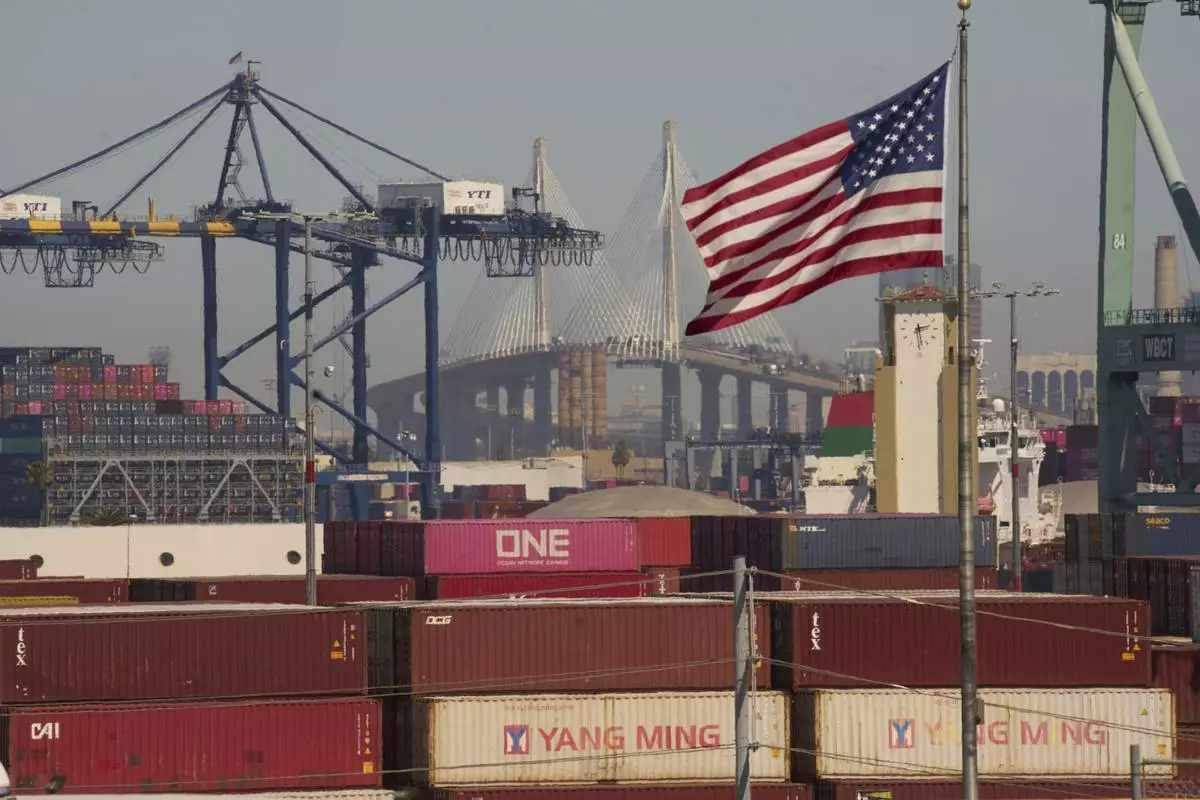
Containers with Yang Ming Marine Transport Corporation, a Taiwanese container shipping company, are stacked up at the Port of Los Angeles with the the Long Beach International Gateway Bridge seen in the background on Wednesday, April 9, 2025 in Los Angeles. (AP Photo/Damian Dovarganes)
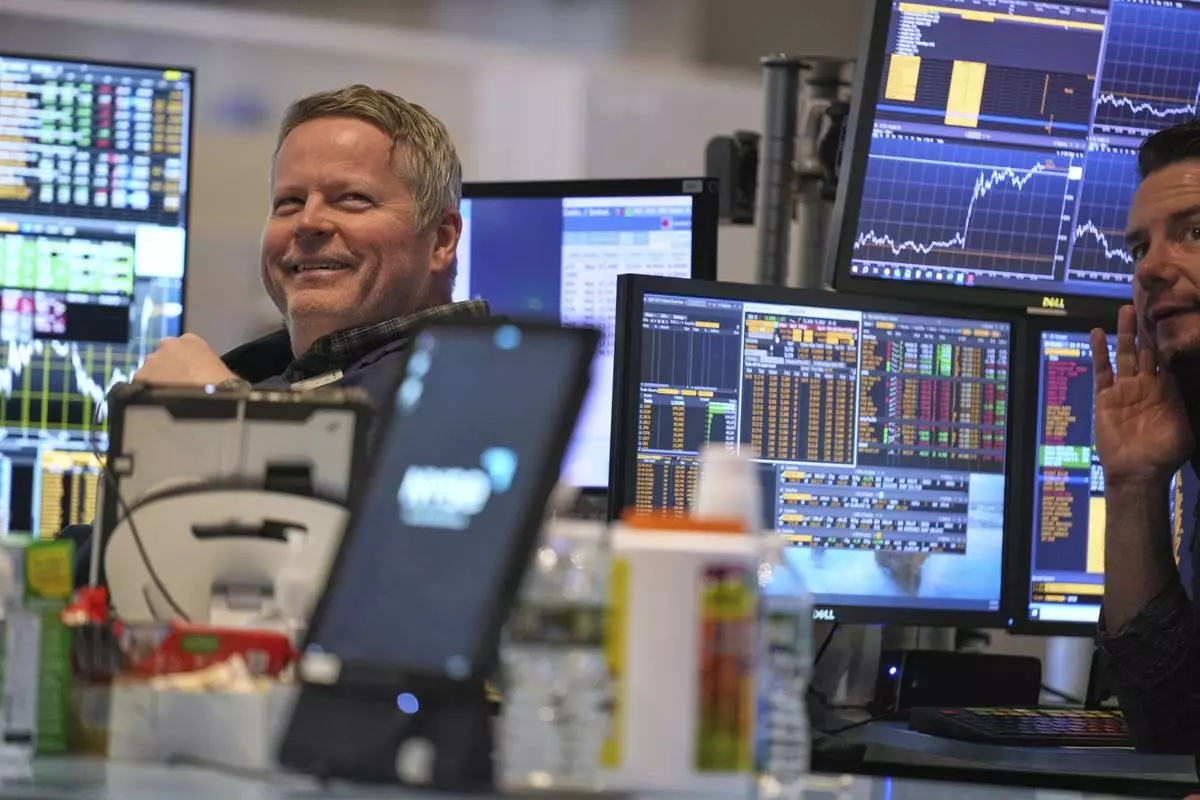
People work on the floor at the New York Stock Exchange in New York, Wednesday, April 9, 2025. (AP Photo/Seth Wenig)
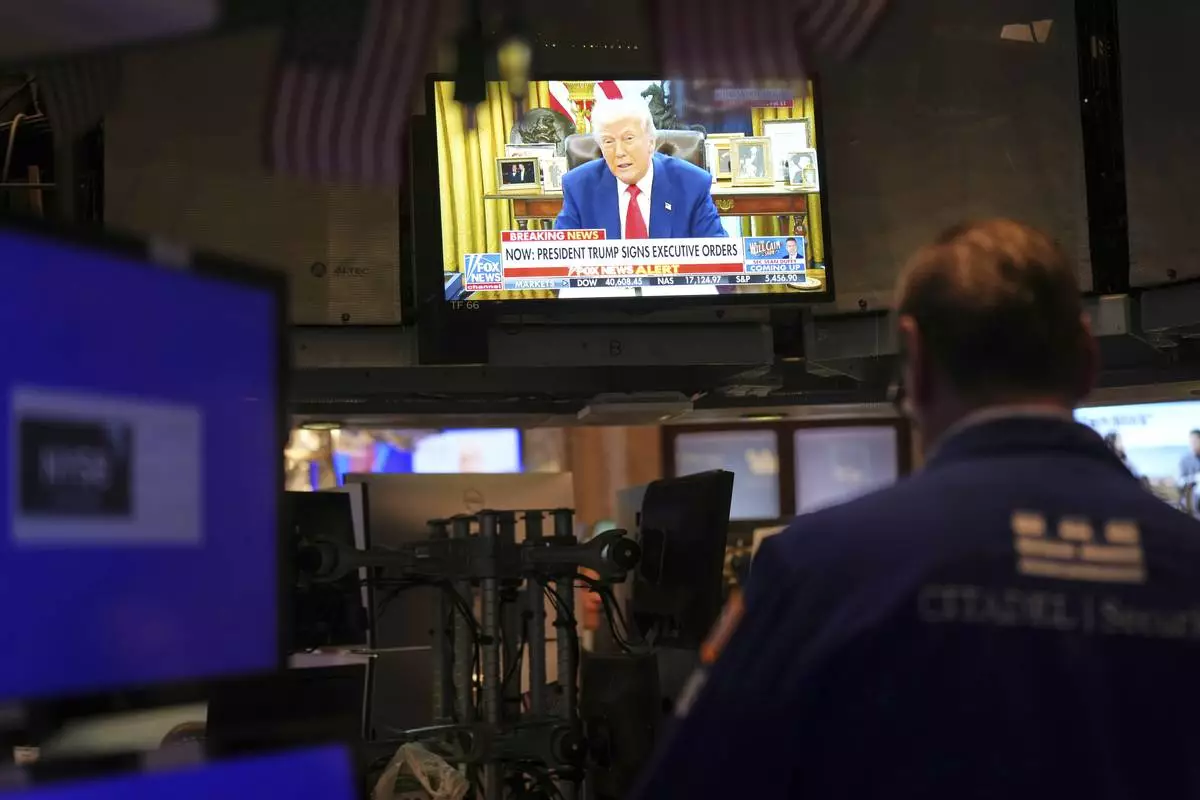
President Donald Trump is displayed on a television on the floor at the New York Stock Exchange in New York, Wednesday, April 9, 2025. (AP Photo/Seth Wenig)
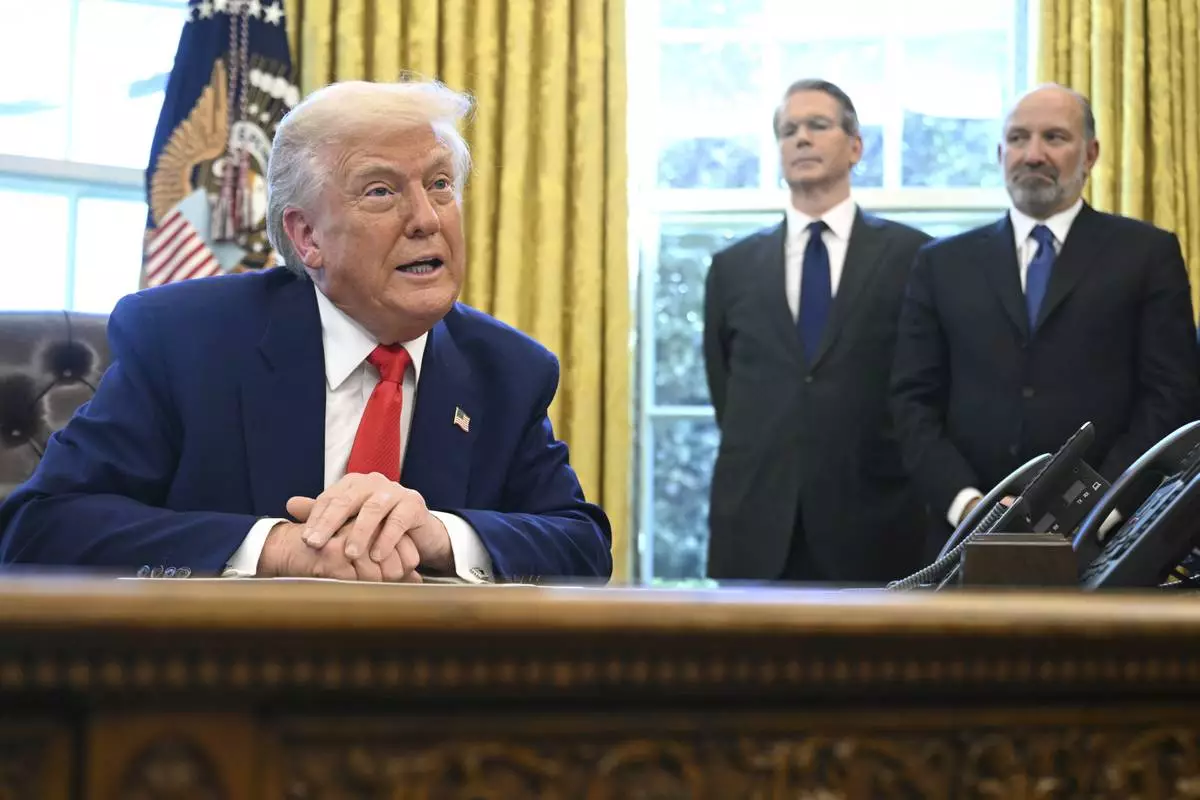
President Donald Trump speaks after signing an executive order in the Oval Office of the White House Wednesday, April 9, 2025, in Washington, as Treasury Secretary Scott Bessent and Commerce Secretary Howard Lutnick listen. (Pool via AP)
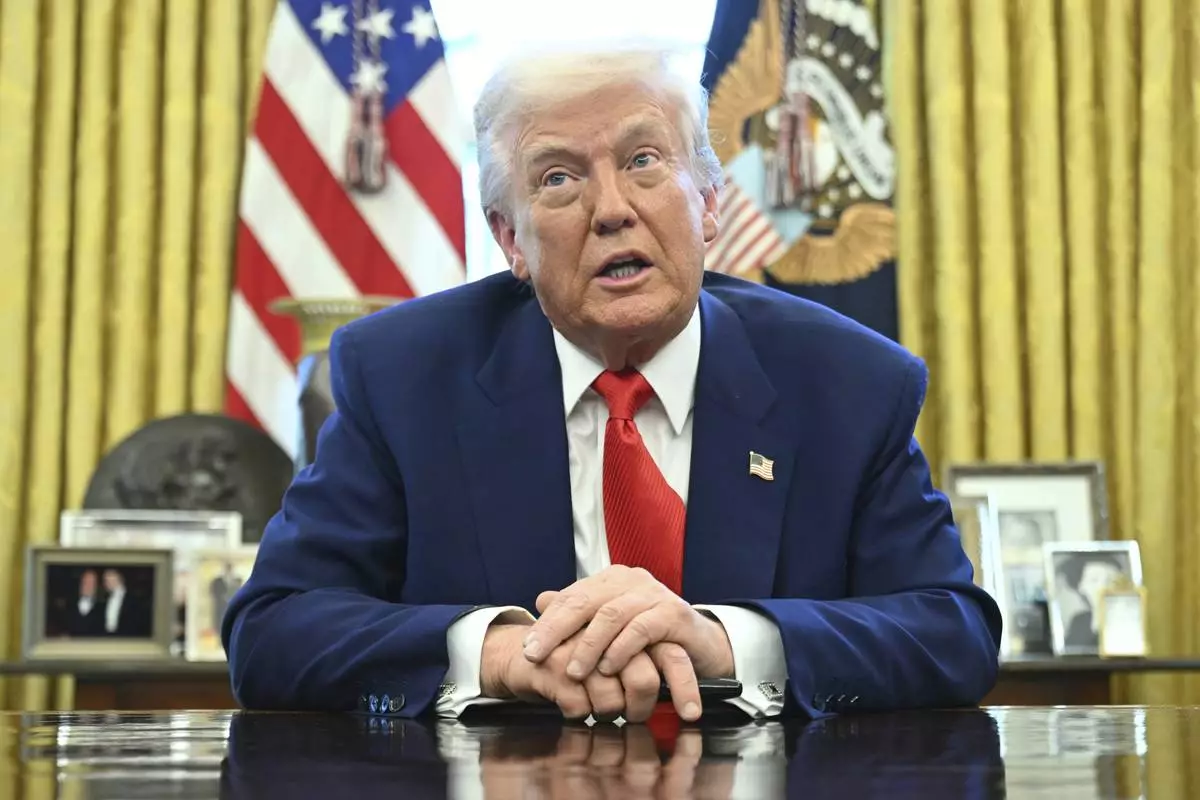
President Donald Trump speaks after signing an executive order in the Oval Office of the White House Wednesday, April 9, 2025, in Washington. (Pool via AP)
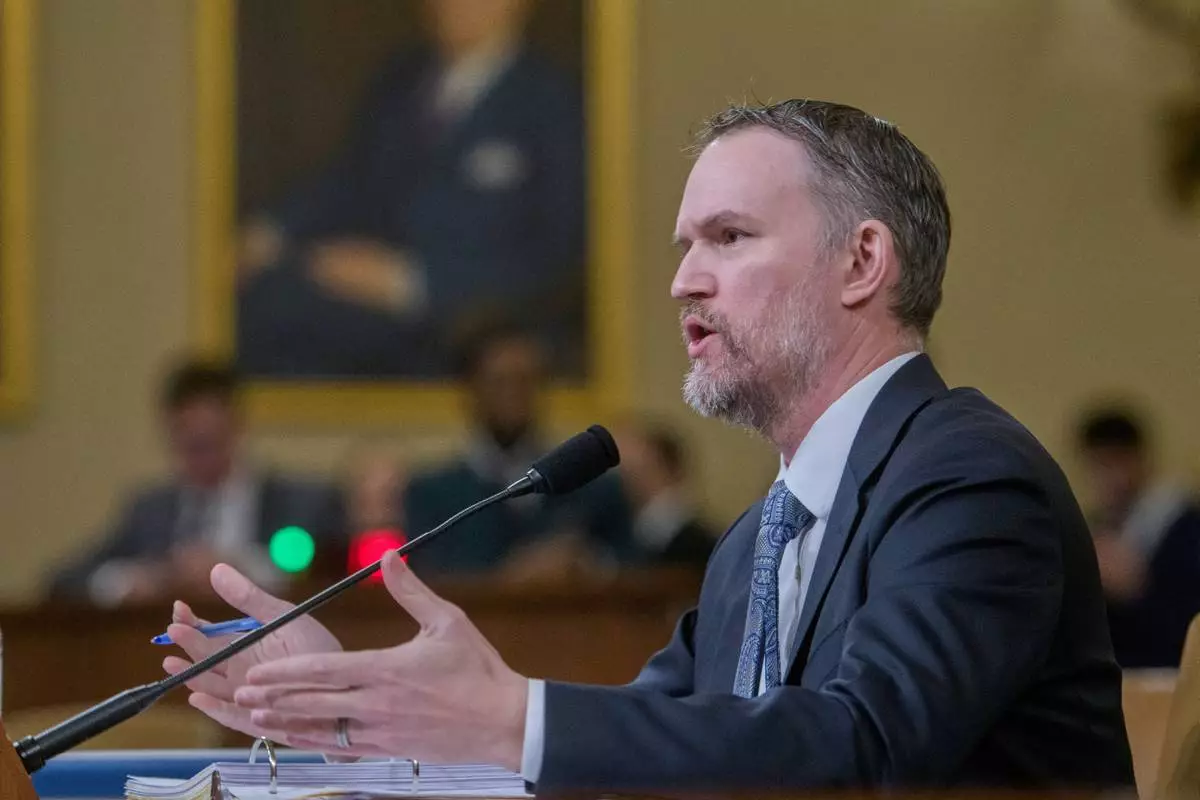
U.S. Trade Representative Jamieson Greer testifies during a House Committee on Ways and Means hearing on Capitol Hill, Wednesday, April 9, 2025, in Washington. (AP Photo/Rod Lamkey, Jr.)
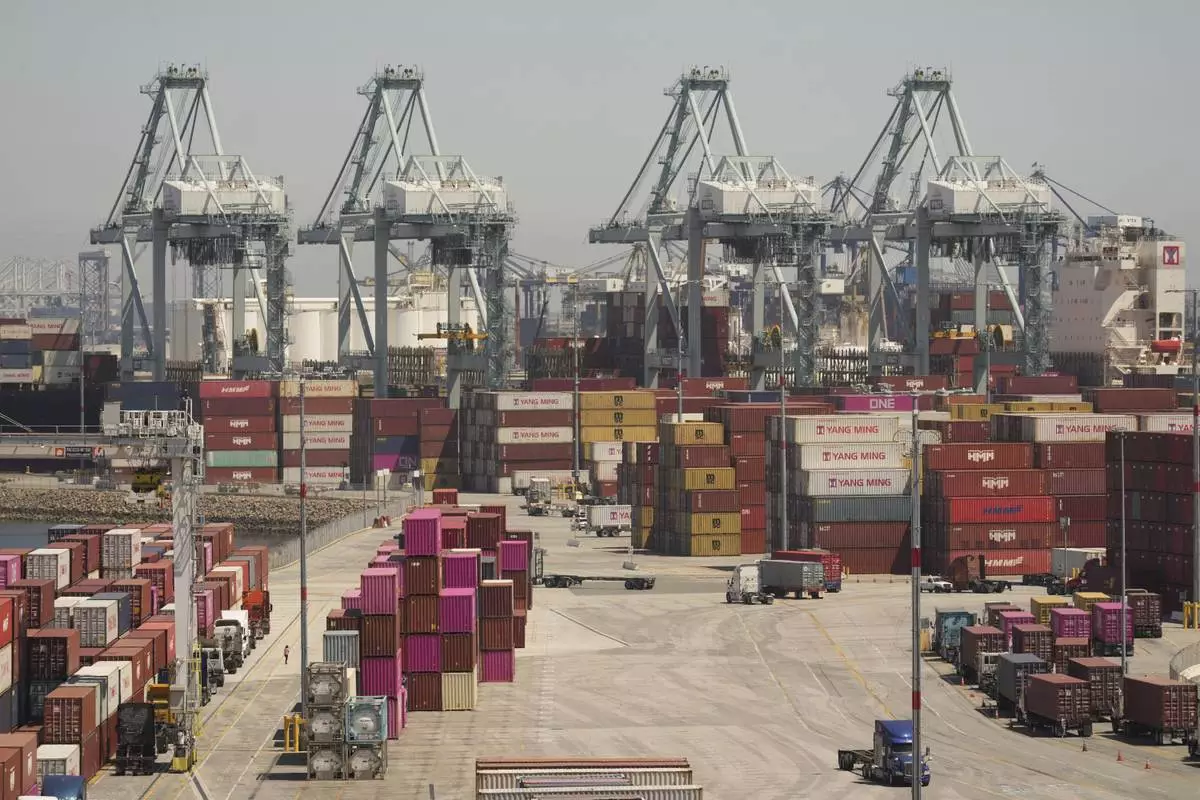
Shipping containers are stacked up at the Port of Los Angeles Wednesday, April 9, 2025, in Los Angeles. (AP Photo/Damian Dovarganes)
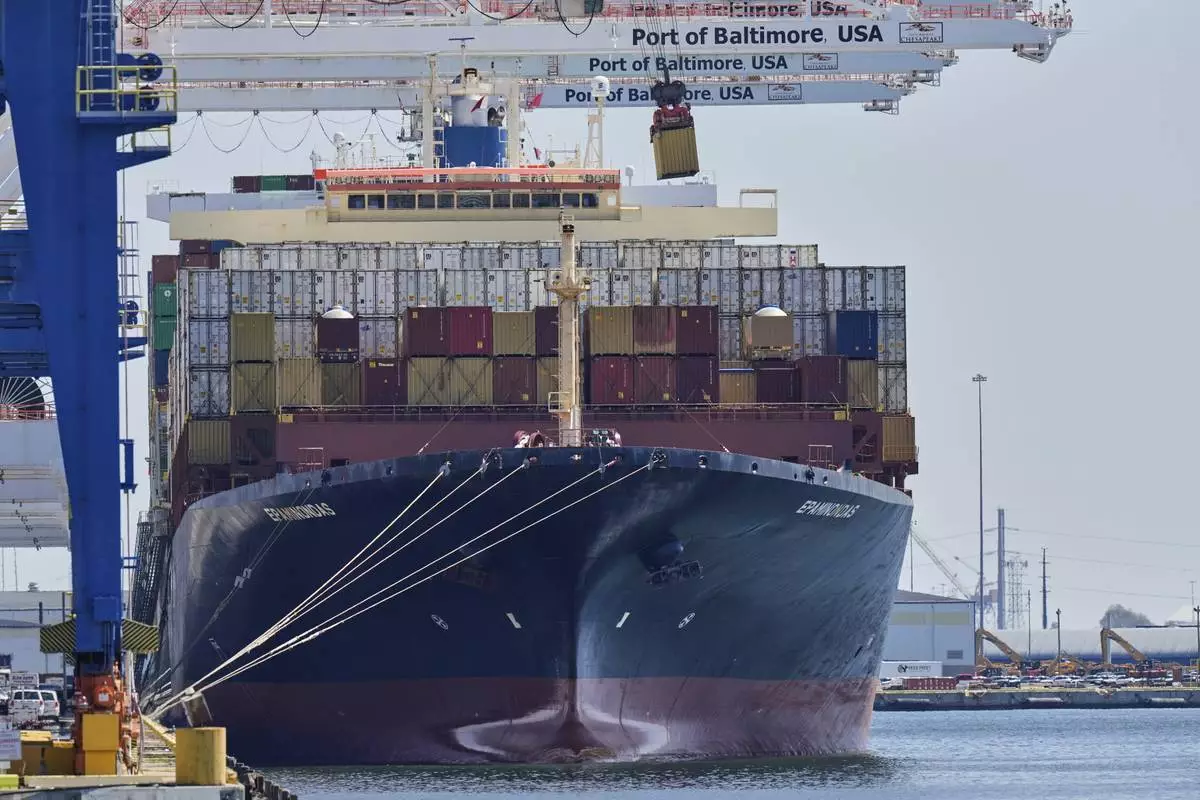
A crane lifts an imports container from the cargo ship Epaminondas while it is docked at the Port of Baltimore, Wednesday, April 9, 2025, in Baltimore. (AP Photo/Stephanie Scarbrough)
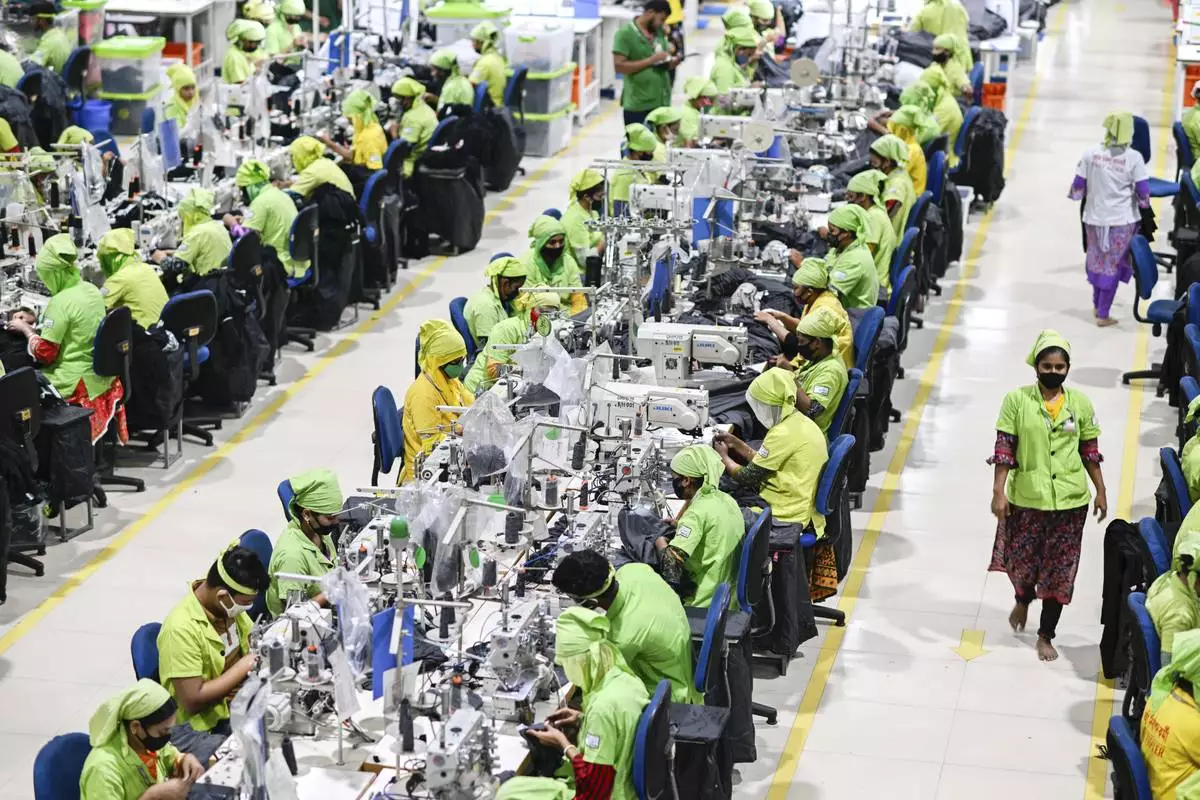
Workers stitch garments at a factory run by the Bangladesh based Urmi Group in Narayanganj, Bangladesh, Tuesday, April 8, 2025. (AP Photo/Mahmud Hossain Opu)
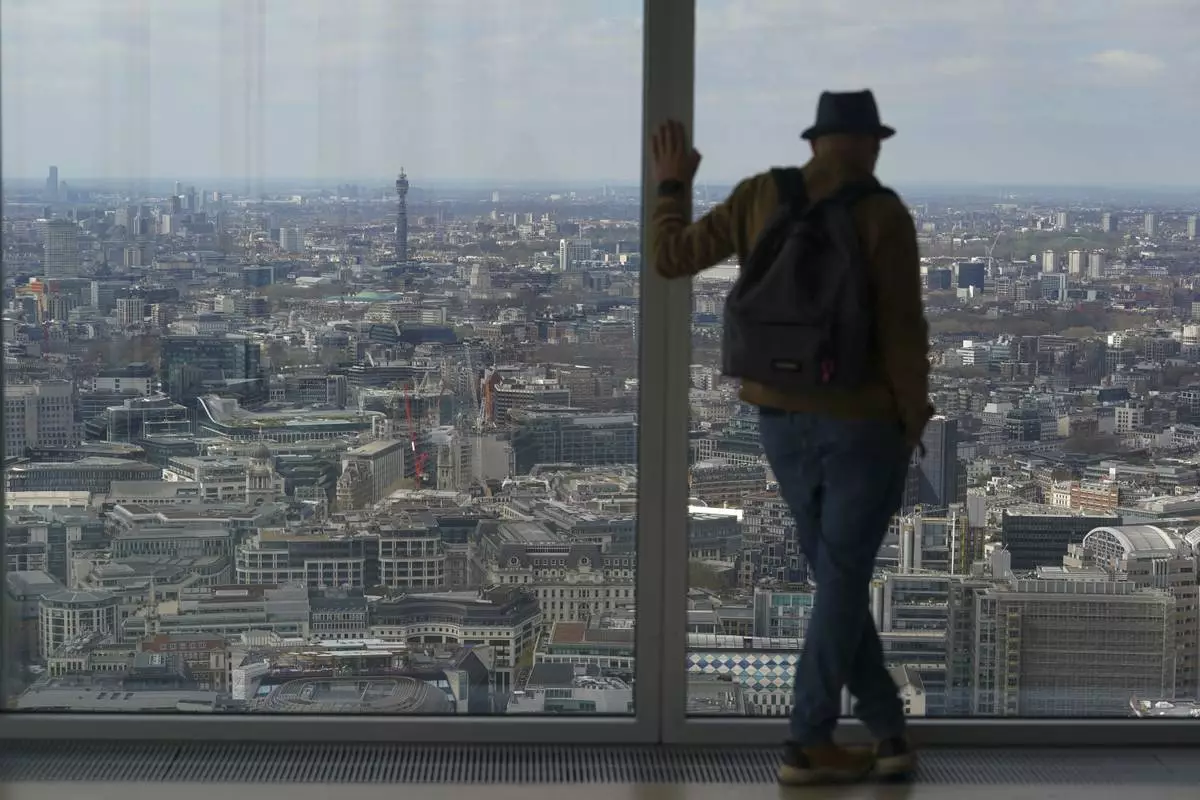
A visitors looks from the Lookout viewing point, in London, Wednesday, April 9, 2025. (AP Photo/Alberto Pezzali)
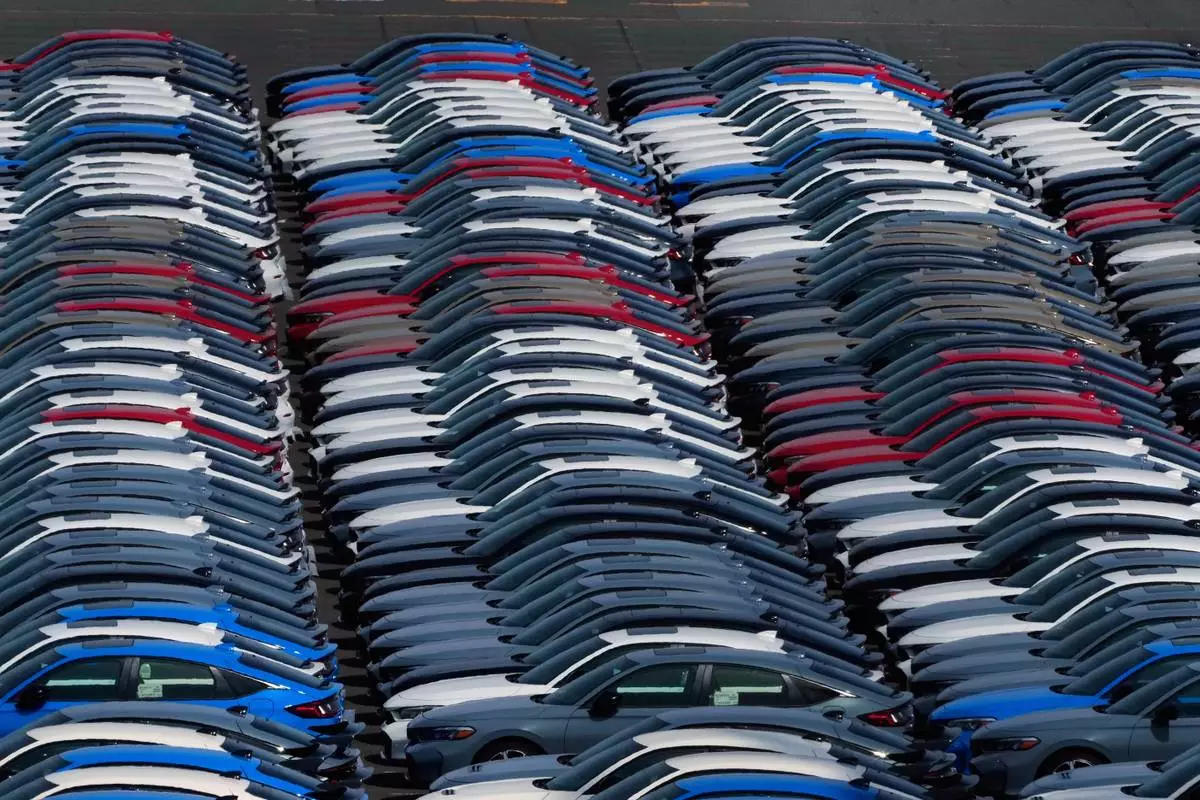
Export vehicles are parked at Daikoku Pier in Yokohama, near Tokyo, Tuesday, April 8, 2025. (AP Photo/Hiro Komae)

A woman labourer plucks tea leaves in a tea garden on the outskirts of Guwahati, India, Wednesday, April 9, 2025. (AP Photo/Anupam Nath)
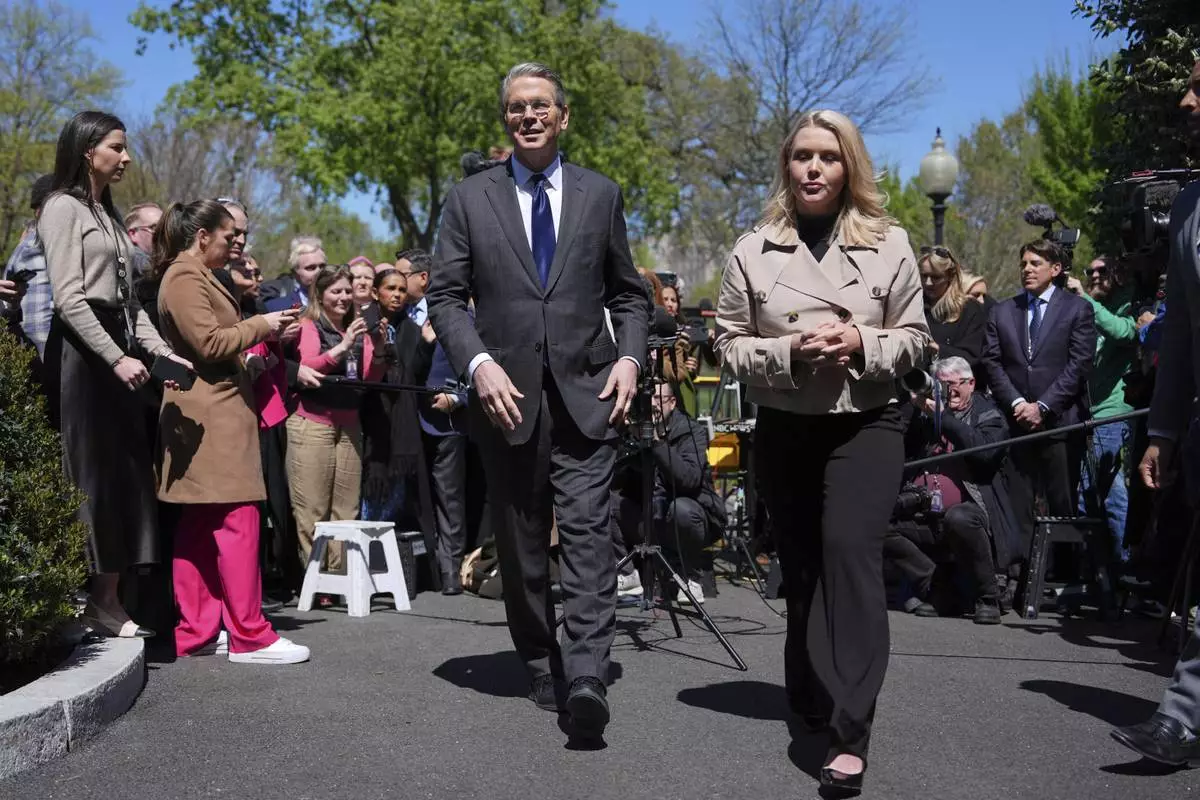
Treasury Secretary Scott Bessent and White House press secretary Karoline Leavitt depart after speaking to reporters outside the West Wing of the White House, Wednesday, April 9, 2025, in Washington. (AP Photo/Evan Vucci)
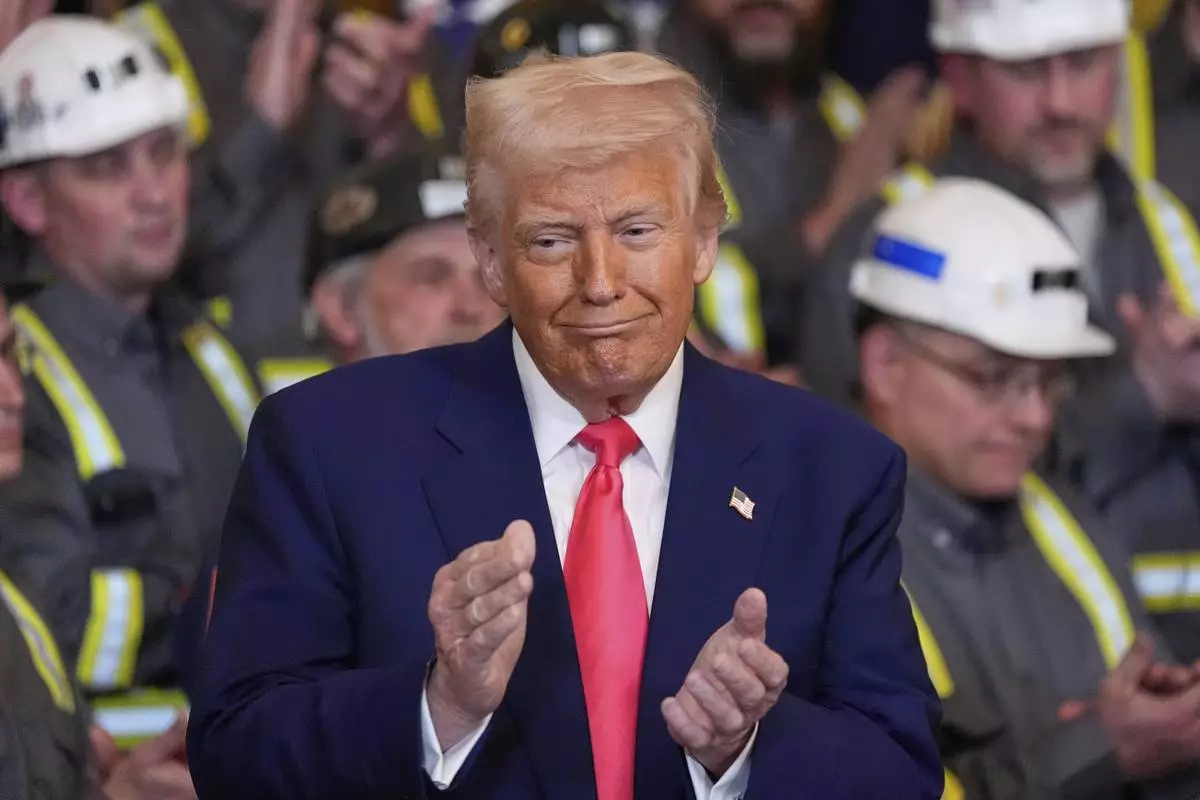
President Donald Trump listens to Jeff Crowe speak during an event on energy production in the East Room of the White House, Tuesday, April 8, 2025, in Washington. (AP Photo/Alex Brandon)

















